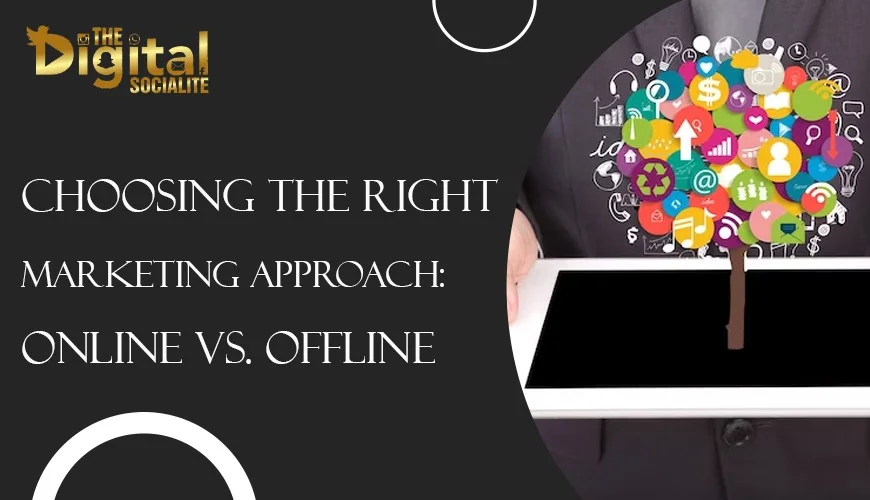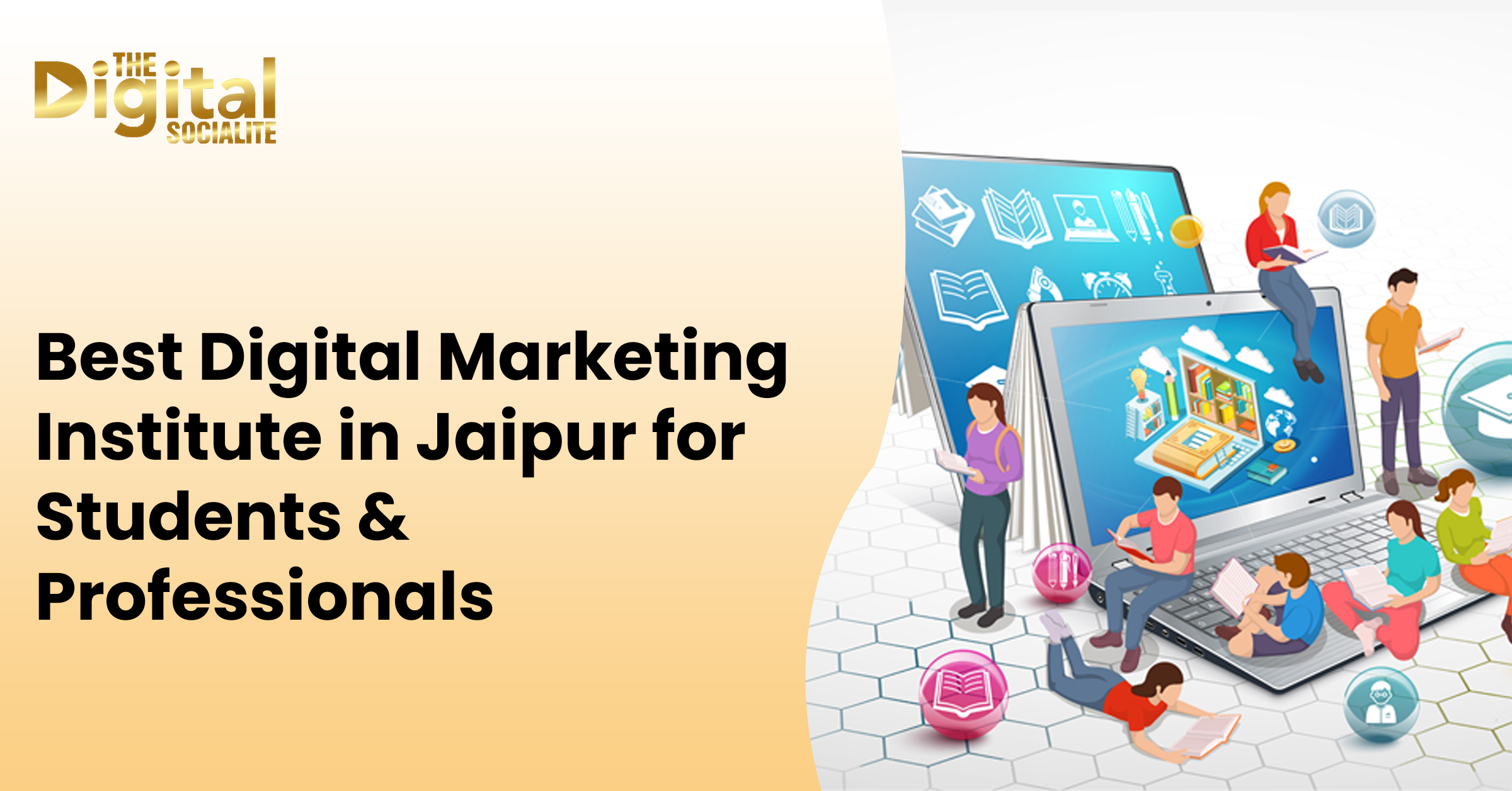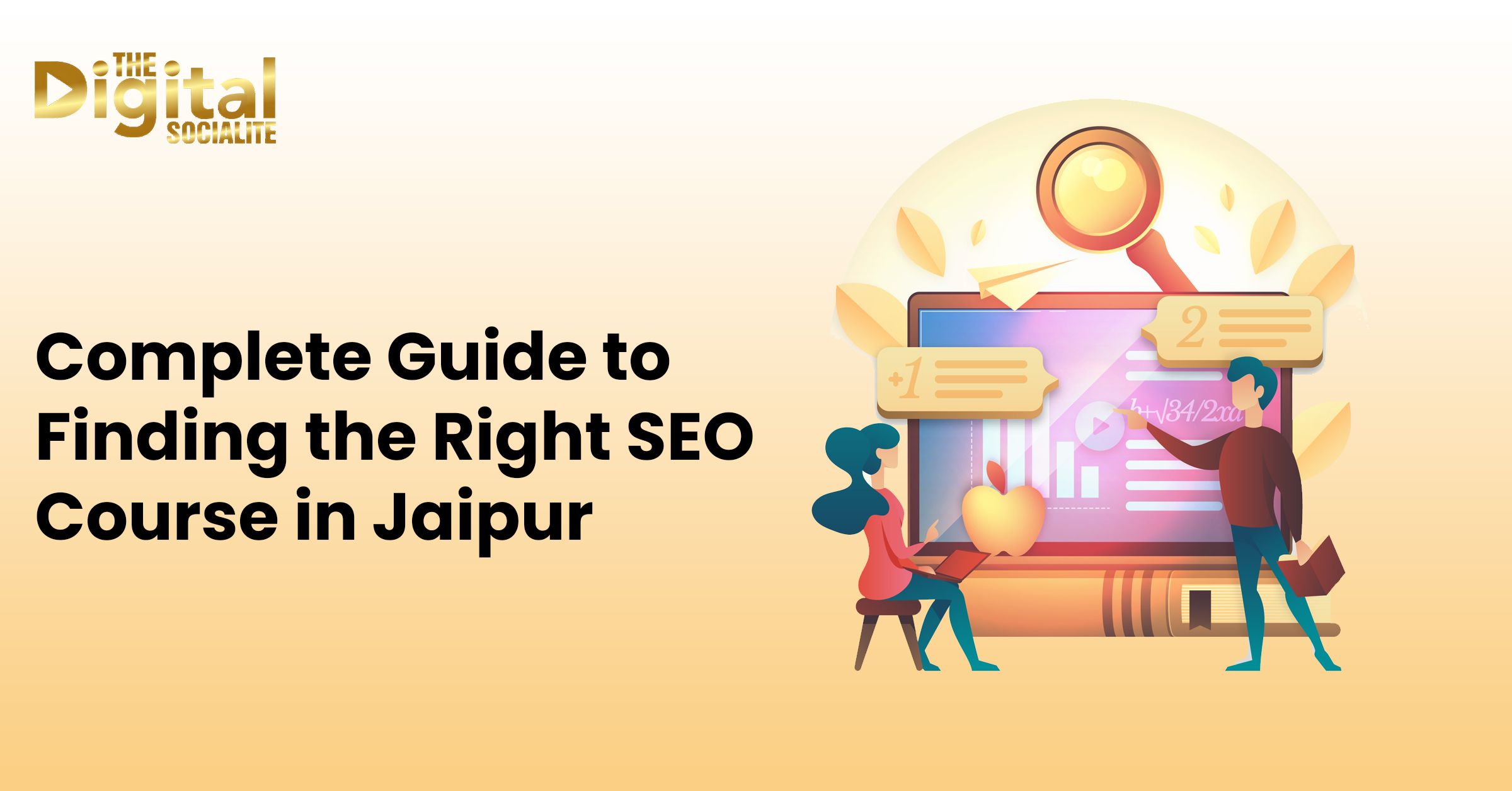The decision between online and offline marketing strategies can have a big impact on the success of your advertising initiatives in today’s quickly changing business environment. Making the appropriate choice between these two options is essential whether you’re an best digital marketing agency in Jaipur, the best SEO agency in Delhi, or the best SEO company in Jaipur. Let’s examine the benefits and drawbacks of both online and offline marketing in this post to assist you in selecting the best approach for your company.
Online Marketing
The term “online marketing” refers to a collection of tactics and strategies used to advertise goods, services, or brands via the internet. Search engine optimization (SEO), email marketing, social media marketing, pay-per-click advertising, content marketing, and other strategies are all included in this. Online marketing uses the internet and many online platforms to connect with and engage a large, frequently worldwide audience. It has benefits including accurate targeting, cost effectiveness, real-time analytics, and the capacity to produce interactive content with a variety of multimedia.
What is included in Online Marketing?
- Search Engine Optimization (SEO): increasing organic (non-paid) traffic by optimizing your website and content to rank higher in search engine results pages (SERPs).
- Pay-Per-Click (PPC) Advertising: Running paid advertising campaigns on social media platforms and search engines where you only pay for everyone who clicks on your ad. This practice is known as pay-per-click (PPC) advertising.
- Social Media Marketing: promoting your brand, engaging with your audience, and running targeted ad campaigns on social media sites like Facebook, Twitter, Instagram, and LinkedIn.
- Content Marketing: This involves producing and disseminating useful material, such as blog posts, infographics, videos, and eBooks, to draw in and keep the attention of your target market.
- Email Marketing: distributing tailored emails to your subscribers to advertise goods, disseminate information, and foster relationships with clients.
- Affiliate Marketing: Affiliate marketing is the practice of collaborating with influencers or affiliates to market your goods or services in return for a cut of revenue.
- Online Display Advertising: Placing banner ads on mobile and website applications to boost brand visibility is known as online display advertising.
- Video Marketing: To engage and inform your audience, create, and share videos on websites like Vimeo, YouTube, and social media.
- Online Public Relations (PR): Managing your online reputation and establishing connections with online media bloggers, sources, and influencers are both aspects of online public relations (PR).
Pros:
Wider Reach: Your main objective as the top digital marketing agency in Delhi or Jaipur is to reach a larger audience. Online marketing is the best choice for companies trying to reach audiences beyond their immediate geographic area since it offers an unmatched opportunity to connect with them.
Cost-Effective: Compared to their offline equivalents, online marketing strategies are frequently more cost-effective. Budgets can be managed precisely with the help of options like social media marketing, pay-per-click advertising, and email campaigns.
Data-Driven Insights: Online marketing provides powerful analytics tools that give detailed information into the performance of campaigns. With the use of this information, plans may be adjusted in real time and optimized for optimal return on investment.
Cons:
Intense Competition: Particularly in major cities like Delhi and Jaipur, the internet market is fiercely competitive. Gaining exposure and standing out can be difficult.
Constant Evolution: Algorithms and platforms for online marketing are constantly evolving. Keeping up with the most recent developments and changing strategy as necessary is a never-ending process.
Offline Marketing
On the contrary, offline marketing refers to conventional techniques for advertising and promotion outside of the digital sphere. Print advertising, radio and television advertisements, direct mail marketing, outdoor billboards, events and trade exhibitions, public relations, and word-of-mouth recommendations are some examples of these strategies. Offline marketing can give marketing initiatives a real-world and human touch. It is frequently used to target local or geographical consumers. It is distinguished by tangible products and in-person encounters, providing a more conventional method of addressing potential clients.
What is included in Offline Marketing?
- Print Advertising: placing adverts in printed products such as flyers, brochures, newspapers, magazines, and other publications.
- Television Advertising: Television advertising is the production and broadcast of ads for cable and broadcast networks.
- Radio Advertising: Running audio advertisements on radio stations to target a local or regional audience.
- Outdoor Advertising: Using outdoor media such as billboards, transit advertisements, posters, and other to market your brand.
- Direct Mail Marketing: Direct mail marketing is the practice of mailing physical promotional items to specific customers, such as catalogs, postcards, and letters.
- Events and experiential marketing: Organizing or taking part in gatherings, conferences, and exhibitions to interact directly with potential clients.
- Public Relations (PR): establishing connections with journalists, industry magazines, and traditional media outlets to obtain press mentions and media attention.
- Networking and Word of Mouth: Building connections through in-person contacts, recommendations from pleased consumers, and word-of-mouth advertising.
- Cold calling and door-to-door sales: Making direct phone or in-person contact with potential customers to promote your goods or services.
- Branded Merchandise: putting together branded pens, freebies, and t-shirts to give out at events or as component of marketing initiatives.
Pros:
Local Targeting: Offline marketing strategies, such as traditional advertising and events, can be quite successful in reaching the correct audience for companies with a significant local customer base.
Tangibility: Printed promotional materials, such as brochures and flyers, provide a tactile presence that can create a long-lasting impact on potential clients.
Personalized Interaction: Direct conversations with customers during events and in-store encounters enable a closer bond with them.
Cons:
Limited Reach: Comparing offline marketing to online marketing, the former naturally has a smaller reach. It might not be the greatest option for companies wanting to grow outside of their immediate region.
Higher expenses: Print advertising and TV advertisements are two examples of traditional marketing techniques that frequently have higher production and delivery expenses.
Choosing the Right Approach
The target market and particular goals of your company will determine the best marketing strategy. Offline marketing might be the best option if you own a local client-serving advertising firm in Jaipur. On the other hand, if you are the top SEO agency in Delhi looking to draw in a clientele from around the world, online marketing is probably your best chance.
Conclusion
The secret to success comes in knowing your company’s specific demands and selecting the marketing strategy that is in line with your objectives, whether you are the best SEO company in Delhi, best SEO company in Jaipur, or an advertising agency in Jaipur. For your brand, the dynamic interplay between online and offline marketing can produce outstanding results.





